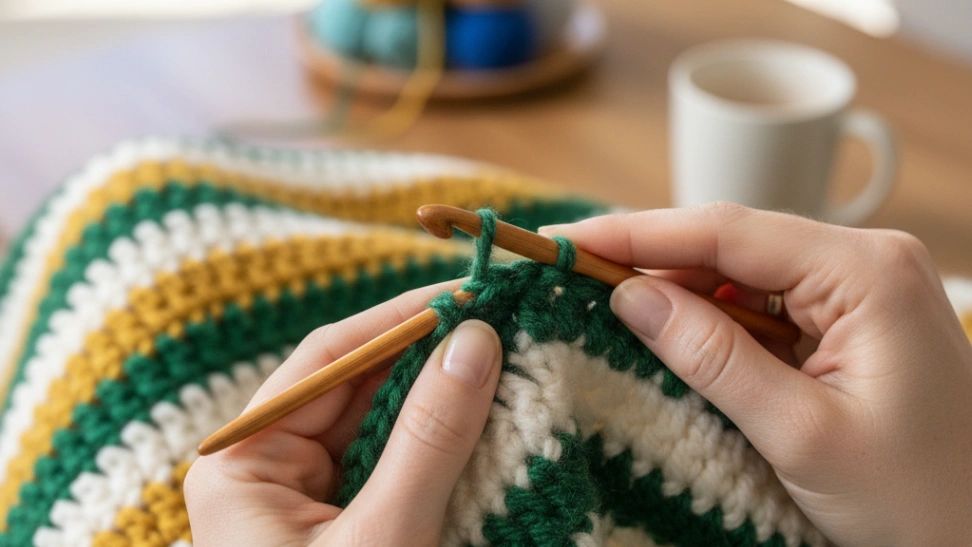History and Origins: The precise origins of crocheting are somewhat enigmatic, with historical evidence suggesting it evolved from various older fiber arts, including embroidery and the looped techniques of nalbinding. While some theories point to ancient origins in China or Arabia, the craft as we recognize it today—using a hook to form interlocking loops—gained prominence in Europe during the early 19th century. Initially, it was known by terms like "shepherd's knitting" and quickly spread across the continent, popularized by figures such as Queen Victoria, who famously crocheted. The word "crochet" itself is derived from the French word "croche," meaning "small hook." During the Victorian era, crochet experienced a golden age, becoming a highly fashionable craft, particularly for creating elaborate lace, decorative trims, and intricate accessories that mimicked expensive woven lace. Patterns were often circulated through women's magazines and community gatherings, fostering a sense of shared creativity and skill development. This period saw the development of many fundamental stitches and techniques still in use today, cementing crochet's place as a practical yet artistic pursuit within households of all social strata. Its initial use was often practical, creating warm blankets or sturdy garments, but its artistic potential quickly led to its expansion into purely decorative items. The craft continued to evolve through the 20th century, adapting to changing styles and material availability, never truly fading but experiencing ebbs and flows in its popularity.
The Art of Transformation and Creativity: What makes crocheting so captivating is its inherent ability to transform simple skeins of yarn into an astonishing array of items. With just a single hook and a strand of fiber, one can conjure anything from a delicate shawl to a robust blanket, from whimsical amigurumi creatures to fashionable garments, and even intricate pieces of art. The creative freedom is immense; crafters can choose from an infinite palette of yarn colors, textures, and weights, combine various stitches to create diverse fabrics, and follow established patterns or design their own unique creations. This process fosters a deep connection to the material and the tangible outcome, providing a profound sense of accomplishment. It's a craft that encourages experimentation and personal expression, allowing each maker to infuse their personality into every loop and stitch. From functional items like pot holders and scarves to purely decorative elements that adorn homes, the possibilities are truly limitless, constantly inviting new challenges and innovations.
Therapeutic Benefits and Mindfulness: Beyond the tangible outputs, crocheting offers significant psychological and emotional benefits. The rhythmic, repetitive motion involved in forming stitches can be incredibly meditative, helping to reduce stress, calm anxiety, and improve focus. Many practitioners describe entering a "flow state" where worries recede, and the mind becomes fully engrossed in the present moment, similar to mindfulness meditation. This tactile engagement can be a powerful antidote to the digital fatigue prevalent in modern life, providing a much-needed break from screens. Furthermore, the problem-solving aspect of deciphering patterns, counting stitches, and correcting errors stimulates cognitive function. Completing a project, no matter how small, provides a tangible sense of achievement, boosting self-esteem and fostering a positive outlook. It's a craft that offers not just an escape, but also a valuable tool for mental well-being and a pathway to sustained concentration.
Community, Learning, and Accessibility: Crocheting is also a deeply communal hobby. Local yarn stores often host "stitch groups" or "crochet nights," providing welcoming spaces for crafters to share tips, learn new techniques, and socialize. Online communities on platforms like Ravelry, Reddit, and various social media groups offer vast networks for pattern sharing, troubleshooting, and inspiration from fellow enthusiasts across the globe. This sense of belonging and shared passion enriches the experience, transforming a solitary craft into a vibrant social activity for many. Learning to crochet is remarkably accessible; a few basic stitches are all that's needed to begin, and countless free tutorials are available online. While advanced techniques and intricate patterns can provide a lifetime of challenge, the low barrier to entry makes it an inviting pursuit for anyone interested in fiber arts, regardless of age or prior crafting experience. The tools are minimal and relatively inexpensive, making it an easy hobby to pick up and practice almost anywhere.



